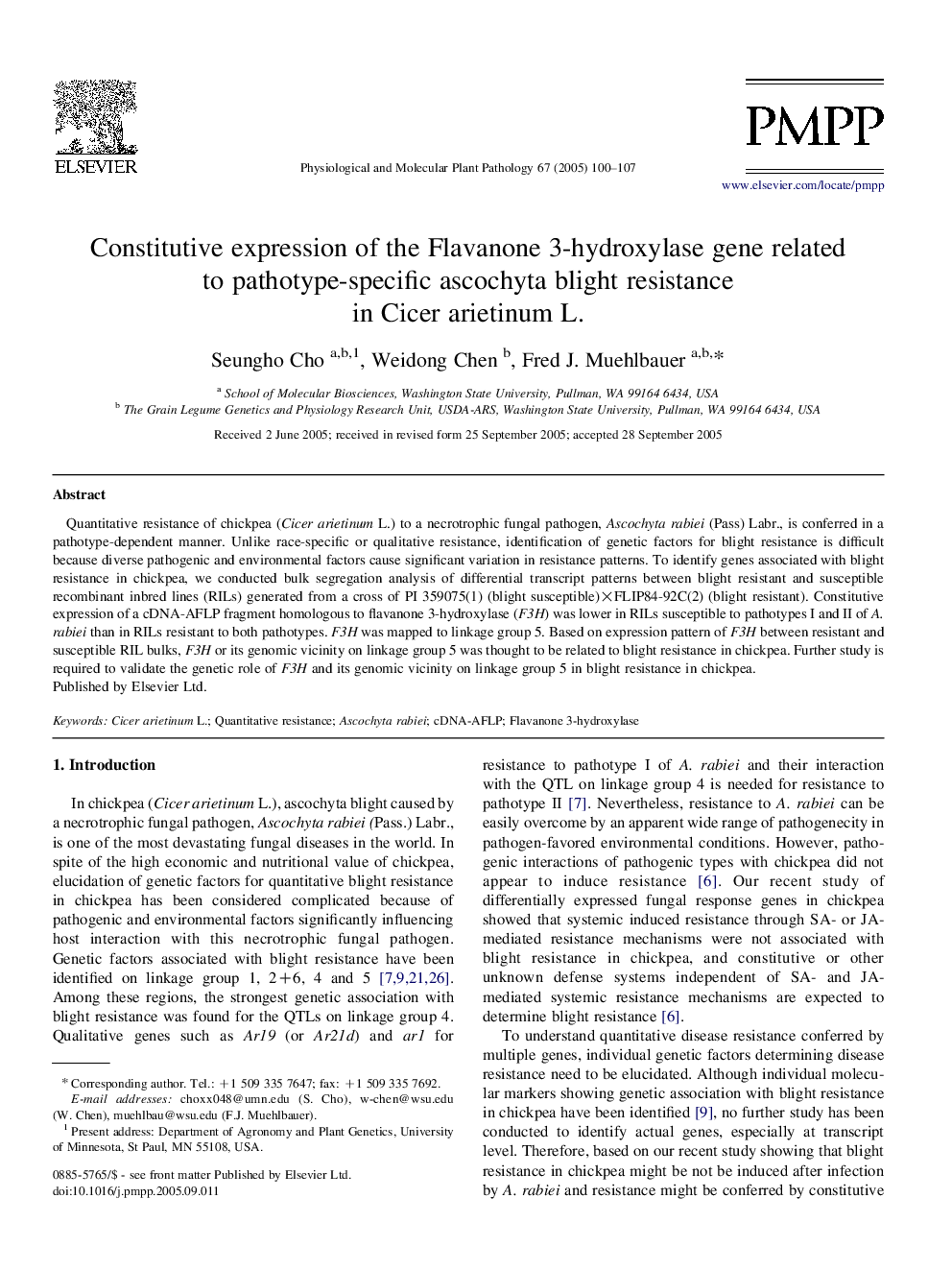| Article ID | Journal | Published Year | Pages | File Type |
|---|---|---|---|---|
| 9144625 | Physiological and Molecular Plant Pathology | 2005 | 8 Pages |
Abstract
Quantitative resistance of chickpea (Cicer arietinum L.) to a necrotrophic fungal pathogen, Ascochyta rabiei (Pass) Labr., is conferred in a pathotype-dependent manner. Unlike race-specific or qualitative resistance, identification of genetic factors for blight resistance is difficult because diverse pathogenic and environmental factors cause significant variation in resistance patterns. To identify genes associated with blight resistance in chickpea, we conducted bulk segregation analysis of differential transcript patterns between blight resistant and susceptible recombinant inbred lines (RILs) generated from a cross of PI 359075(1) (blight susceptible)ÃFLIP84-92C(2) (blight resistant). Constitutive expression of a cDNA-AFLP fragment homologous to flavanone 3-hydroxylase (F3H) was lower in RILs susceptible to pathotypes I and II of A. rabiei than in RILs resistant to both pathotypes. F3H was mapped to linkage group 5. Based on expression pattern of F3H between resistant and susceptible RIL bulks, F3H or its genomic vicinity on linkage group 5 was thought to be related to blight resistance in chickpea. Further study is required to validate the genetic role of F3H and its genomic vicinity on linkage group 5 in blight resistance in chickpea.
Related Topics
Life Sciences
Agricultural and Biological Sciences
Plant Science
Authors
Seungho Cho, Weidong Chen, Fred J. Muehlbauer,
